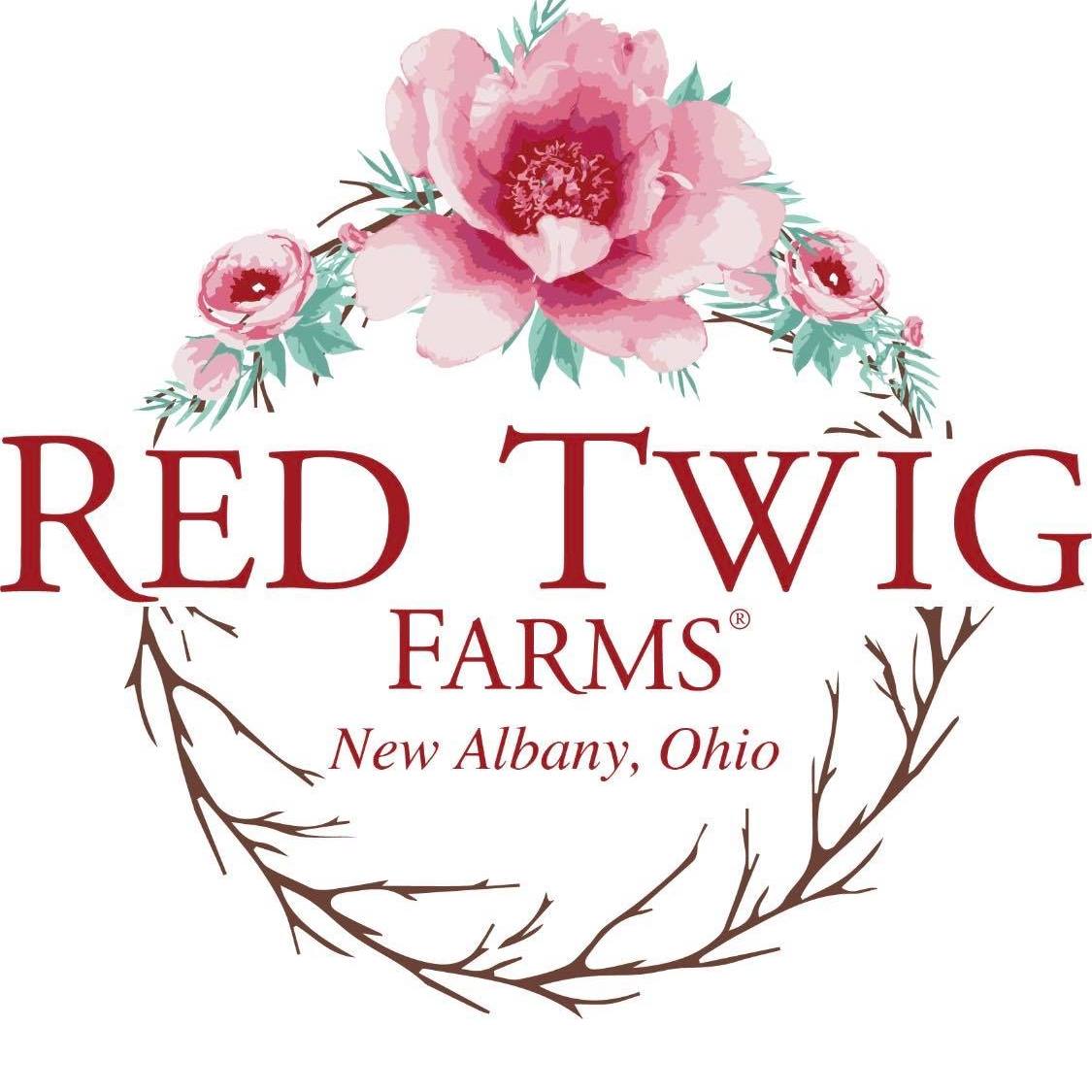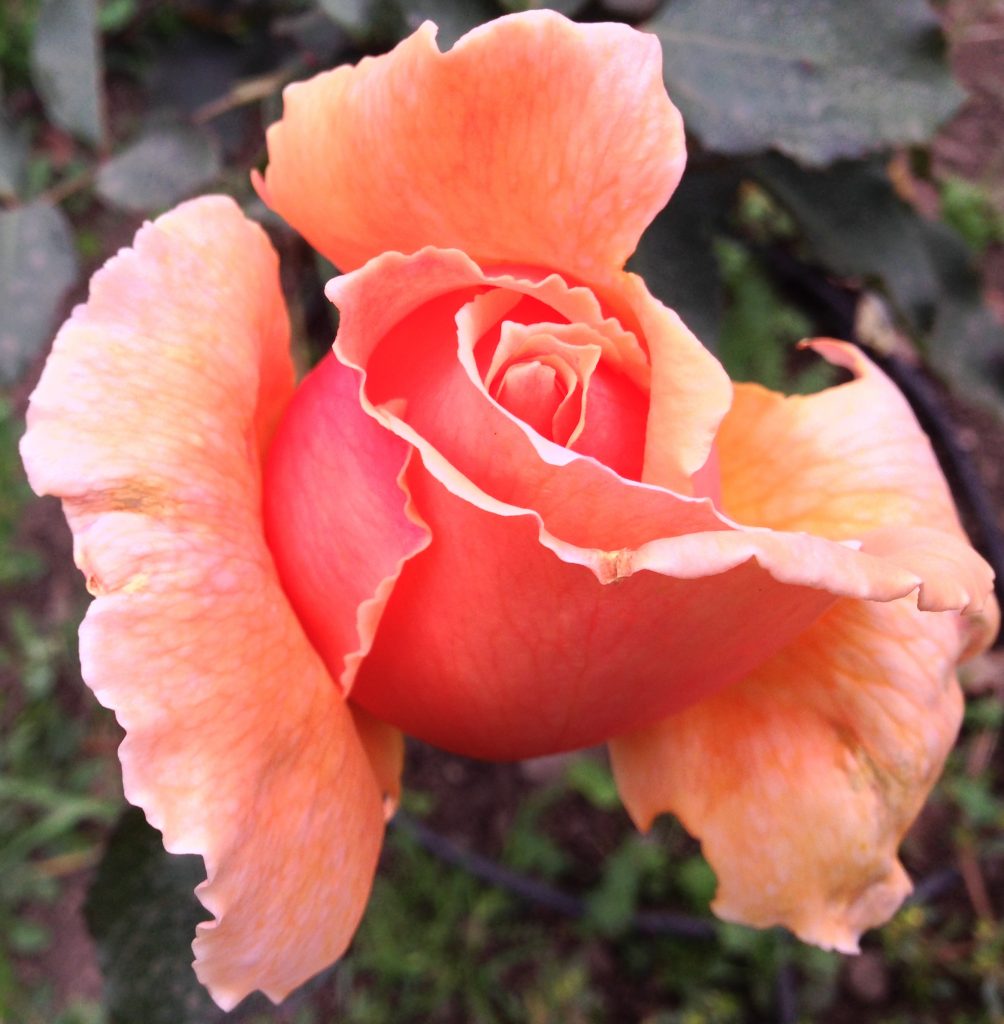
NOTE: We’re so pleased to publish this poignant essay by Slow Flowers member Kate Watters. Kate is a farmer-florist, a botanist, a graduate of UC Santa Cruz’s Center for Agroecology and Sustainable Food Systems, and owner of Agave Maria Botanicals in Flagstaff, AZ. Follow Kate on Instagram @agavemaria
It’s a beautiful, blue-skied sunny afternoon in mid-February—just warm enough to coax the bees out to forage on the rosemary flowers. I can sense the shift toward spring in the plants. The green swords of the garlic and tulips leaves have emerged in earnest from beneath blankets of leaf mulch. I notice the tight buds on my David Austin roses are swelling along the naked branches as I cut them back. Seasonal tasks like rose pruning and fertilizing are not to be overlooked in the farmer-florist calendar if I want to have creamy apricot roses for my spring weddings. This behind-the-scene work will help ensure I will have prolific blossoms cascading gracefully from the bride’s bouquet, emitting a soft, fruity musk—the very essence of love.
Standing in the garden, I remember unloading a U-Haul truck packed with dozens of imported red roses in Las Vegas twenty years ago. Have you ever done something for money that was slightly demoralizing or morally hideous—a job that does not exist in a guidance counselor’s lexicon and never makes it to your resume? My stint selling flowers for Valentine’s Day on a street corner in Las Vegas was filed deep in my personal archives. Today my livelihood has parallel yet opposing angles as I grow and sell “slow flowers.” I am part of a national movement of farmers and florists to promote the use of seasonal, locally sourced blooms, that are close to home, often purchased directly from the grower.
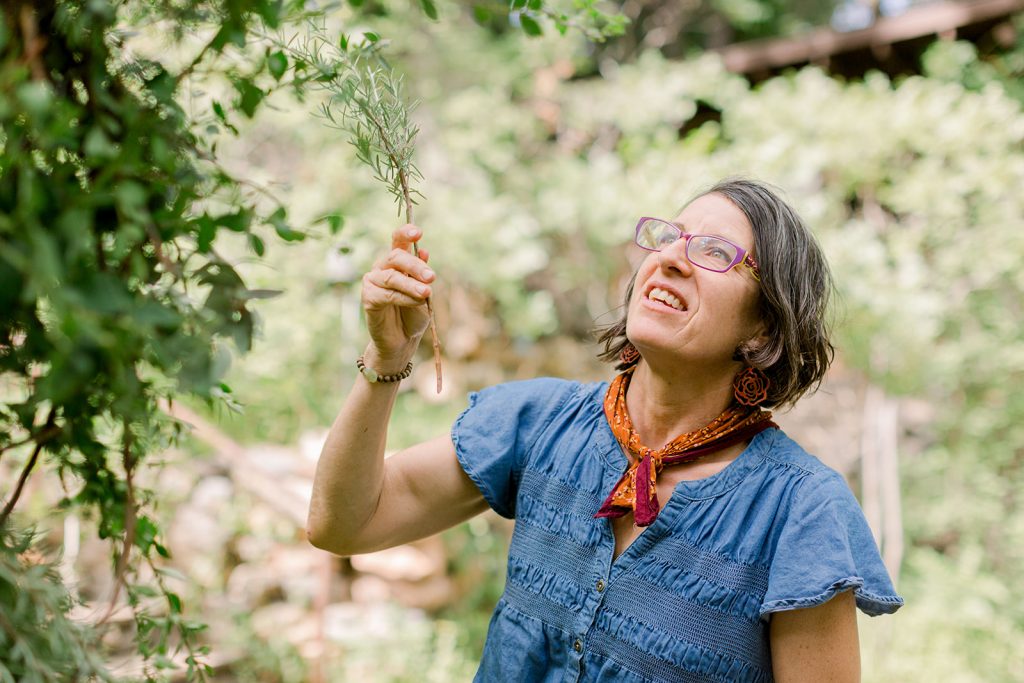
At the time I was working seasonally on the Grand Canyon trail crew attempting to dig myself out of manual labor by attending graduate school in botany. I was newly married to a river guide; our love affair grew from our shared passion for the Canyon and its natural wonders. When you are a seasonal worker, living on your summer savings in the off-season, you find creative ways to bridge the long gaps between paychecks. So when we heard we could earn two hundred dollars per day selling flowers for Valentine’s Day on the street in Las Vegas, it sounded like we hit the jackpot.
I imagined that we would be situated on the bustling Vegas strip with a European-style cart full of red roses flanked by sparkling water fountains. Maybe I would be wearing an apron. I couldn’t have known then that fifteen years later I would be wearing an apron while peddling bucketloads of organically grown flower bouquets at a farm stand at the entrance to U.C. Santa Cruz campus, where I was a mid-life farm apprentice. Twenty years ago selling flowers in Sin City on an official love holiday felt strangely like a higher calling to my burgeoning botanist self, and I’m willing to admit now, a bit naive and romantic. When I decided to cut classes to join my husband on this venture, he exclaimed, “I’m taking my wife on an all-expense paid Valentine’s Day vacation in Las Vegas!”
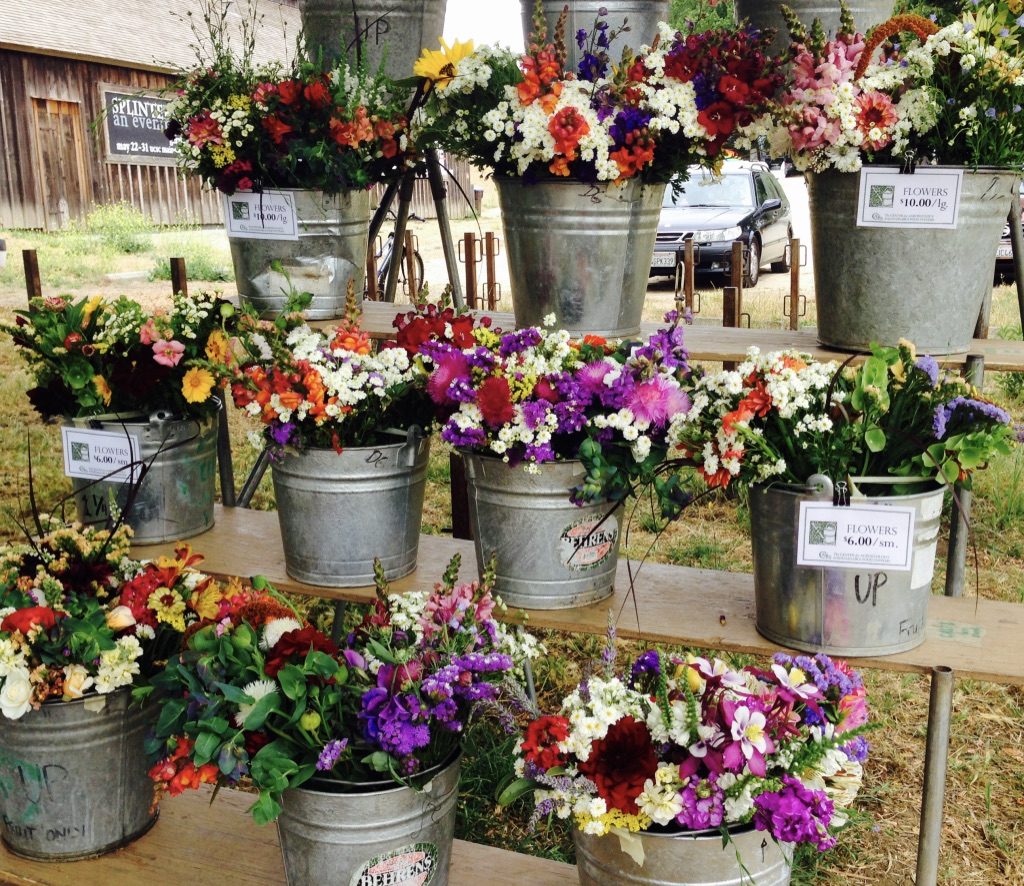
Las Vegas is a land of extremes; people win and lose big. The fictional accounts from movies and songs portray a lifestyle of beautiful, famous and filthy rich card sharks. In reality, the city is a horribly unsustainable metropolis that looms in the middle of the Mohave Desert. It’s a place where fifty-story casino hotels are reconstructed over and over so as not to become outdated. People drive new cars, wear sequins and apparently buy flowers on street corners.
Our first brush with Sin City glamour and grit was in the alley behind the flower shop, Flower Power. The owner, Daniel, had been a river passenger and he not only fell in love with the Grand Canyon, he also fell for his river guides. Daniel extended the short-term cash job to the boating community and a caravan from Flagstaff made its way to Vegas. The shop was wedged between a gun and ammo store and a stripper shoe boutique displaying hundreds of shiny stiletto boots and shoes in the window. We became acquainted with the Flower Power team inside a refrigerated semi trailer stocked end to end with red roses freshly delivered from overseas.
Our display was not exactly the wooden cart I had pictured in front of the Bellagio. It was an Easy-Up tent pitched at a gas station parking lot on outskirts of a Las Vegas suburb. We experienced a sales rush at the beginning of the first day, then business slowed to a depressing lull that afternoon. Our spirits flagged when we calculated our hourly wage, minus meals and lodging to realize our net gain would be considerably less than we planned. My morale sank again as we handed over thousands of dollars in cash to Daniel, who made periodic rounds in his black Hummer with tinted windows.
Years later, the Santa Cruz farm stand fulfilled the vision I held in my heart those days in Vegas. Wicker baskets, wooden boxes, burlap and galvanized buckets were artfully arranged by eager apprentices. The happy customers were devoted to our high quality local produce and flowers, and religiously frequented our market as if attending weekly church services.
A billboard flashed Welcome to Las Vegas! Furnished extended stay studios! then dissolved into an image of Dolly Parton advertising an upcoming concert at the MGM Grand. The corner newspaper bin was full of free leaflets for weekly rentals and all manner of ladies for hire. I felt like I was swimming upstream in a sea of souls with blank looks; people who were waiting for the slots to line up and the roulette wheel to stop spinning. And I was selling them flowers.
My first sale was to several young Mexican women who poured out of an old sedan. I strained to translate their conversation in Spanish as they picked over the flower bouquets. I understood they were intended for a female, but could not discern the details. I noticed a 13-year-old girl crying in the front seat. I offered her a red carnation that had broken off a stem and she smiled through her tear-stained cheeks. I wondered about the ratio of tears shed in this city each day to the volume flowers sold to make them stop. There were no set prices for any of our products. Daniel belonged to the up-selling marketing school—throw out a high price to start. If someone hemmed and hawed out about a $40 bouquet of roses, you sweetened the deal with a teddy bear made in China clutching a red heart that spoke in a robot voice, “I love you” when squeezed. As if robotic sweet nothings could say everything that needed to be said.
I wondered about the ratio of tears shed in this city each day to the volume flowers sold to make them stop.
I felt a hot wave of shame course through me when I tried to sell people overpriced flowers grown by marginalized young women in Colombia who earned pennies on the dollar and threw in a sweatshop teddy bear to close the sale. An African-American woman walked over from the furnished rooms with weekly rates. She had a full, rounded rear end that filled out her white pants, and her eyebrows were carefully penciled on. When I told her $15 for a dozen carnations she said “L-A-W-D” real slow, painfully reiterating what I already had acknowledged to myself as a major rip off, and was now trying to pawn off to the low-wage workers of Las Vegas. When I offered to throw in a stuffed heart keychain and a blank card, she shifted her significant hips while considering the offer and reluctantly handed me $15 dollars.
It happened more than once that men stopped at our display because of the large Budweiser sign that read $12.95 in big red letters. When we quoted them our standard $40 a dozen they would balk and point to the sign to begin bargaining. You got the distinct feeling that they would rather be buying a case of beer and calling it a night rather than buy roadside roses for their sweetheart and a dinner out. Yet they seemed satisfied walking away with a half dozen roses and a chocolate heart lollipop.
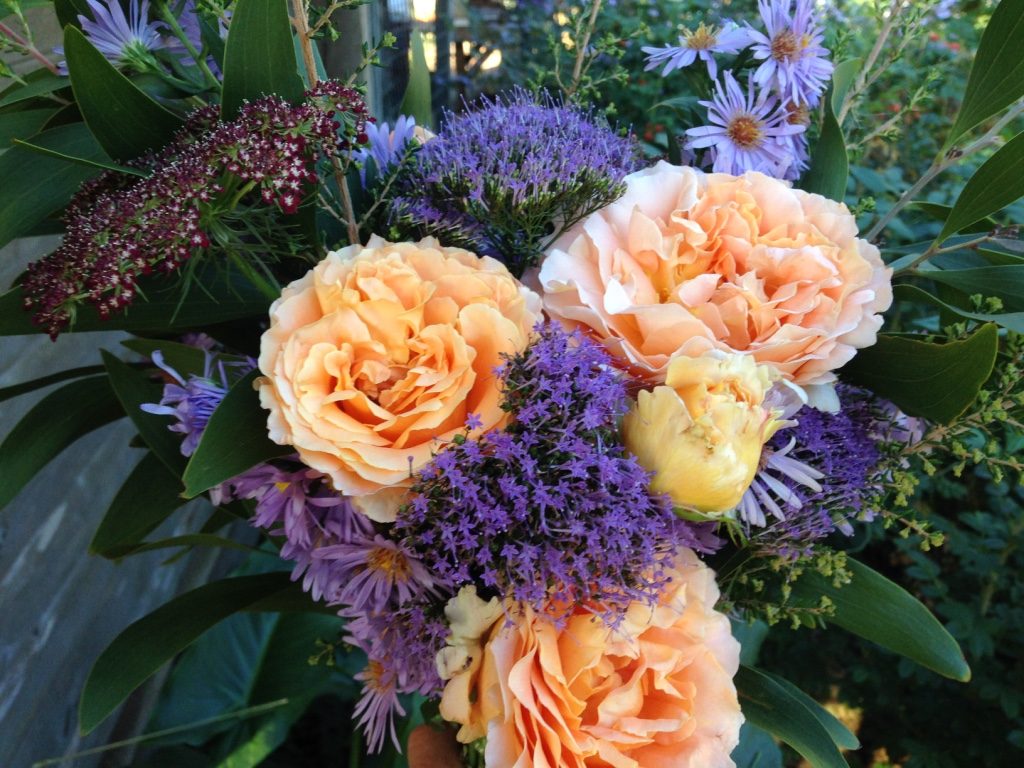
As the days drew closer to February 14th, I my empathy grew for our customers. Interestingly there were many women buying flowers for other women, not waiting for men to make the gesture. The male shoppers were becoming increasingly less discerning, more frantic and distressed. What does she want? Their faces seemed to be pleading for answers. They bought roses as if posting bond money to get out of jail. “Anything to make her happy,” had an undertone more like, Anything not to be tossed in the slammer again. “I just got to stay out of trouble,” one man muttered as I handed him a dozen roses and he passed me two crisp 20-dollar bills from the nearby ATM machine.
I glanced over at my husband standing on the street corner in the red rain jacket he wore to navigate rapids in the Grand Canyon, waving bouquets of red roses at passing traffic. I felt the stark contrast of showy, Las Vegas love with our own organic version that had sprung from our love of nature.
I questioned the juvenile and sexist foundation of Valentine’s Day. Men are expected to buy flowers for their soul mate, or someone they are courting. I wondered when red roses and pink carnations became proxy for affection, and borderline emotional extortion? How can a flower grown at the expense of workers’ health and the environment be considered a beautiful expression of love? Were women falling prey to a retail-induced opportunity for a boost of self-worth? Do we really measure our desirability by the expense men will go to please us with cheap flowers?
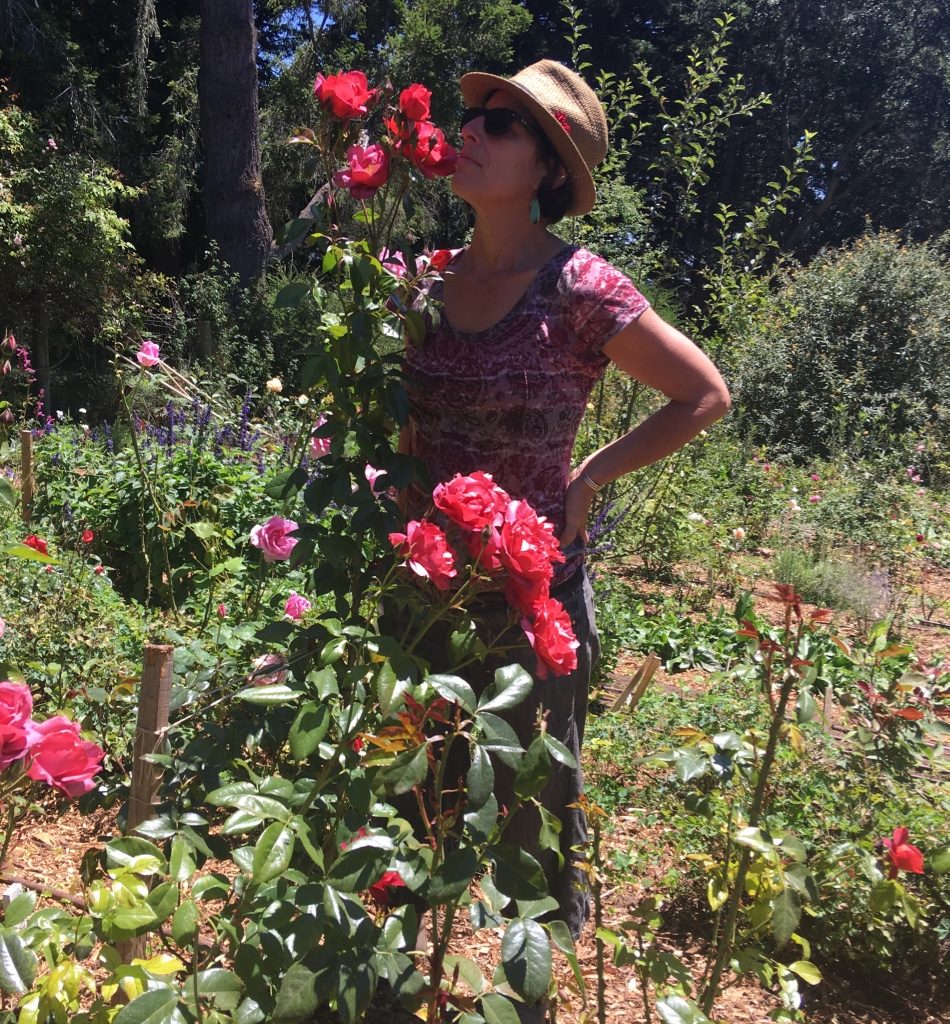
Today I am an organic flower farmer and am nearing the end of my “apprenticeship,” with five years logged in the dirt since Santa Cruz under my worn boots. I bear my own battle scars that illustrate the true cost of falling in love and producing a perfect rose. My marriage lasted almost fifteen good years and then our growing pains became too great stay together and continue thriving. My hands are callused and the lines in my face are deeper. The distant memory of this chapter reminds me of the constant evolution of my own journey to seek truth, beauty and connection. Sometimes it means pruning back old growth to make room for the new, vigorous shoots that will bloom boldly. As I shovel compost around the base of each of my precious rose plants and plot the collective effort to cultivate 21st Century flower power, I know that beginning with a heart full of love can never lead me astray.

